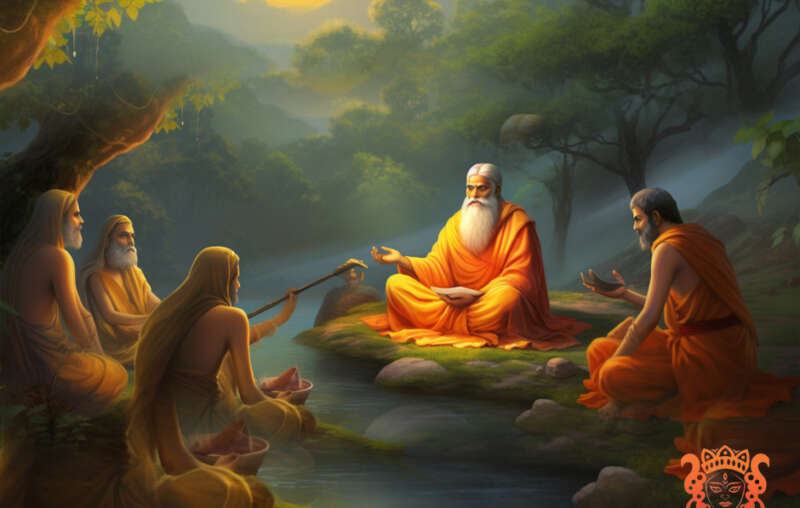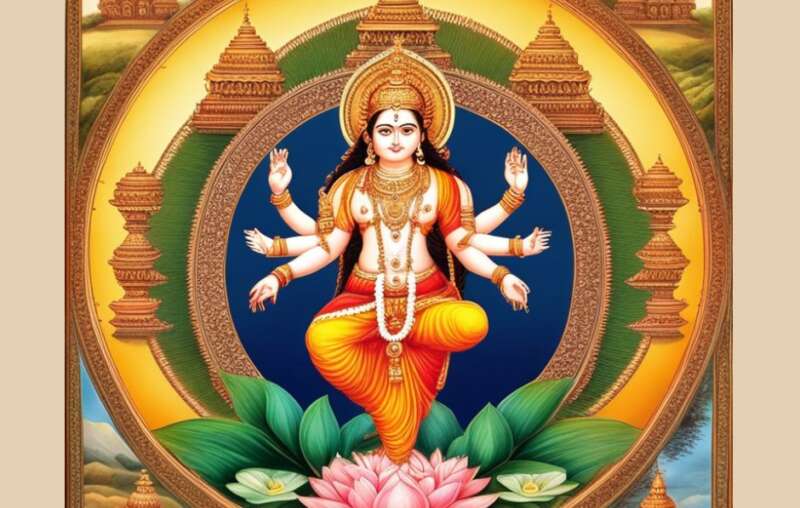A journey of non-physical nature through the physical
Yoga, as most people view it, is not a physical exercise. It’s not akin to a gym workout, although you work with your physical body. The journey of yoga is about a sacred union with the divine by getting control over the physical and mental landscapes of existence. It’s about finding the ethereal, cosmic essence of the physical reality, including the physical body, by releasing mental imprints or samskaras that limit our perception of all of existence.
Much of the knowledge of the ancient science of yoga comes from texts penned down by sages who have experientially gained it. Sage Patanjali’s Yoga Sutras lay down an eight-fold path to the attaining the union that we call yoga. His definition of yoga is simple: yoga is the cessations of the modifications of the mind. The first four limbs of Patanjali’s eightfold path, called bahirangas (limbs pertaining to the external world), include asanas (physical postures) and pranayama (breath control).
However, in 15th century BCE, there came another yogic sage, Swami Swatmaram, who came up with a more concise, although related, version of a yoga text—Hatha Pradapika. While most aspects of Hatha Pradapika overlap with the yoga sutras of Sage Patanjali—both outlaying a pathway to liberation (moksha)—the former advocates the attainment of oneness by focusing on kundalini awakening. Even Swatmaram’s four-fold (chaturanga) approach to yoga includes asanas and pranayama. But he prescribes the middle path to realize the transcendental nature of existence.
However, both Patanjali and Swatmaram emphasized the existence of something beyond the limitations of the physical world. Both sages were of the belief that the ultimate nature of yoga is non-physical, although the physical body becomes a channel through which the soul can unite with the divine. It’s a journey that is directed more inward than outward. It demands a conscious approach on the part of the practitioner, requiring him or her to release what no longer serves their ultimate purpose of life.
This is where a clear understanding of Sadhak and badhak tattvas becomes crucial for yogic practitioners. Let’s talk about both of these terms in detail in this blog.
Knowing what is holding you back and what is propelling you forward
While embarking on a spiritual journey like yoga, a human first encounters physical and mental patterns that make him a human. As humans, we all have favourable as well as unfavourable ways of life. We are a collection of both. If individuation is the goal of a person’s yogic life, he has to accept all parts of him—the parts that are helping him go forward on the path of yoga and the parts that are holding him back. These two parts are called sadhak and badhak tattvas respectively.
Simply put, sadhak tattvas are factors that facilitate a person’s yogic journey, while badhak tattvas are the ones that obstruct the path. A person on the path of yoga is a perpetual seeker, a lifelong learning, who is willing to face both factors inside and outside of him and doing the needful. Both Sage Patanjali’s Ashtanga yoga and Swami Swatmaram’s Hatha yoga emphasize the understanding of these factors by the seeker.
Badhak tattvas
Let’s first look at some verses from Patanjali Yoga Sutras and Hatha Pradapika before we talk more about badhak and sadhak tattvas:
1. “दुःखदौर्मनस्याङ्गमेजयत्वश्वासप्रश्वासाः विक्षेपसहभुवः॥ (Chapter 1, Sutra 31 from Patanjali’s Yoga Sutras)
Translation: “The mind becomes distracted by difficulties such as disease, dullness, doubt, negligence, laziness, cravings, misperceptions, and failure to attain a state of concentration.”
2. अत्याहारः प्रयासश्च, प्रजल्पो नियमाग्रहः। जिसङ्गश्च लौल्यञ्च षड्भियोगो वििश्यनि॥ (Chapter 1, verse 15 of Swatmaram’s Hatha Pradapika)
Translation: “Excessive eating, excessive effort, excessive talking, overbearing adherence to rules, keeping bad company, and greed for sense objects—these six are the enemies of concentration.”
Both verses mentioned above talk about the badhak tattvas or the impediments that hold the seeker back from going ahead on the path of yoga. Below is the quick overview of the nine causes of failure of yoga, as elucidated by Sage Patanjali:
1. State of disease (Vyadhi): Physical ailments, when experienced by the practitioner, can become a major impediment for them. Most of these diseases can be inevitable due to physiological and biological changes.
2. Dullness (Styan): Styan is defined by akarmanyata, which is the unwillingness to attain a defined goal due to sleepiness and drowsiness, although the practitioner is keen and strong enough to do so.
3. Doubt (Samshaya): Yoga fails with lack of trust. A practitioner in doubt will question the words of Guru and will question the intention of his sadhana. He questions the path he is on, meaning he is in samshaya or doubt. Such an attitude can be detrimental to the path of yoga.
4. Procrastination (Pramada): Pushing one’s yogic practice to a later time is an obstacle. Procrastination can be a viewed as a lack of enthusiasm to pursue the yogic path and there can be many reasons for the same—laziness or emotional dysregulation.
5. Laziness (Aalasya): Yoga can become unsuccessful when there is a heaviness in the mind or body. Overeating and overthinking can be a cause of this, making one lazy and unmotivated to practice yoga.
6. Materialism and sensual gratification (Avirati): Yoga demands a level of vairagya or detachment from worldly desires. If the practitioner is driven by materialistic desires and sensual pleasures, then he fails to walk on the path of yoga.
7. Erroneous perception (Bhranti Darshana): False knowledge or ignorance can be viewed as the modifications of the mind that should cease to attain a state of yoga. Viparyaya leads to bhranti darshana, which gives a wrong perception of the world. Such deluded perception can impede the practitioner from becoming a true yogi.
8. Inability to achieve a finer state (Alabdhbhumikatva): A seeker has to accept the fact that there will come many distractions along his way. An inability to look at these distractions for what they are and succumbing to them will impede his progress. As such, reaching the finer states that are characteristic of yoga becomes difficult for him.
9. Instability (Anavasthitatva): Even if the seeker attains the finer state, he may be unstable in his mind owing to the prevalence of doubts or other obstacles. This instability can be a major cause of failure of yoga.
Sage Patanjali also gave a list of upavikshepa, which are additional symptoms that can be badhak tattvas or obstacles on the path of yoga. They are unhappiness (dukkha), mental depression (daur manasya), instability of the body (angamejayatva) and erratic breathing (shvas-prashvas). The presence of these symptoms can be an indication that there are obstacles on the path of the seeker.
While Sage Patanjali lays down nine causes of failure, Swami Swatmaram lays down six. The badhak tattvas according to the Hatha Pradapika are as follows:
1. Overeating (Atyahara): While Patanjali’s Yoga Sutras talk about dullness, laziness and procrastination, Hatha Pradapika talks about the reason for the same being the habit of overeating. Eating beyond one’s appetite can be a badhak tattva for the practitioner—a habit that is better forfeited as soon as possible.
2. Exertion (Prayasa): Everyone has a limit—physical and mental—that should not be exceeded. Going beyond one’s natural limits would lead to exertion, which can impede the spiritual growth of the practitioner.
3. Prajalpa (Talkativeness): There’s a reason why silence is given so much importance in the spiritual realm. Exceeding the limit in speech distracts the mind from the inner world to the outer world, which can act as an obstacle for the practitioner desirous of experiencing the divine oneness.
4. Adhering to rules (Niyamagraha): Yoga seeks to liberate, even from traditional rules that bog the practitioner down instead of uplifting him. The practitioner should have a degree of flexibility and adaptability to detach from certain rules and regulations that have outgrown the times. If not, then there will be hindrance on the path of yoga.
5. Excessive socialization (janasangha): Being too much in the company of people can be looked at as a badhak tattva because doing so can arouse a multitude of feelings in the practitioner. It can be anger, love, hate, lust, ego, and other emotions—all of which can disturb the person’s yogic practice.
6. Fickle-mindedness (Laulya): Inconsistency or lack of commitment can be a major cause of failure for a Hatha yogi. Having a capricious mind makes it difficult for the practitioner to stay focused on his yogic path and will ultimately deter him from attaining his spiritual goals.
Sadhak Tattvas
Now that we know the major impediments that may come on the path of a yogi, let’s talk about solutions—the Sadhak tattvas. Here’s what Chapter 1, verse 16 of Swatmaram’s Hatha Pradapika says about sadhak tattvas:
उत्साहात् साहसाद् धैर्यात् तत्वज्ञानाच्च निश्चयात्।
जनसंगपरित्यागात् षडभियोंगः प्रसिद्दयति: ||
Translation: “Steady wisdom, perseverance in the yoga of the senses, courage in the yoga of understanding, and unwavering determination in the yoga of knowing the Self—renouncing attachment to worldly associations, these are the six attributes of accomplishment.”
Swami Swatmaram laid down the following facilitators of a yogi’s path:
1. Enthusiasm (Utsah): A practitioner who has a positive attitude towards yoga and is full of zeal to walk the path is sure to gain the benefits of their practice. As such, enthusiasm can be a great impetus for the practitioner.
2. Courage (Sahas): Yoga brings out what is repressed inside. The practitioner who has the courage to face the visions and realizations that arise can become a true yogi.
3. Perseverance (Dhairya): Making yoga a regular practice no matter what happens can help the practitioner persevere through the challenges that come on his path.
4. Discriminative knowledge (Tattvajnana): For a yogi, his sadhana is his goal. As such, anything he does that is conducive to the attainment of this goal is surely a sadhak tattva.
5. Determination (Nischaya): A determined person can be a great yogi. Besides perseverance, a yogi should have the determination to continue his practice under all circumstances.
6. Aloofness from company (janasangha parityaga): If janasangha can be detrimental to a person’s yogic path, limiting one’s social interactions can be a great solution. Limiting excessive socialization keeps negative influences at bay. However, it’s important not to consider any human being as inferior to them.
By being aware of one’s badhak tattvas and embracing the sadhak tattvas can make a huge difference in the life of anyone walking the yogic path. It’s important to remember that it may take a while to completely overcome the factors that are holding the practitioner back. But yoga is more about the journey than the destination. With unwavering patience and practice, one can definitely attain the goal of yoga—liberation.



